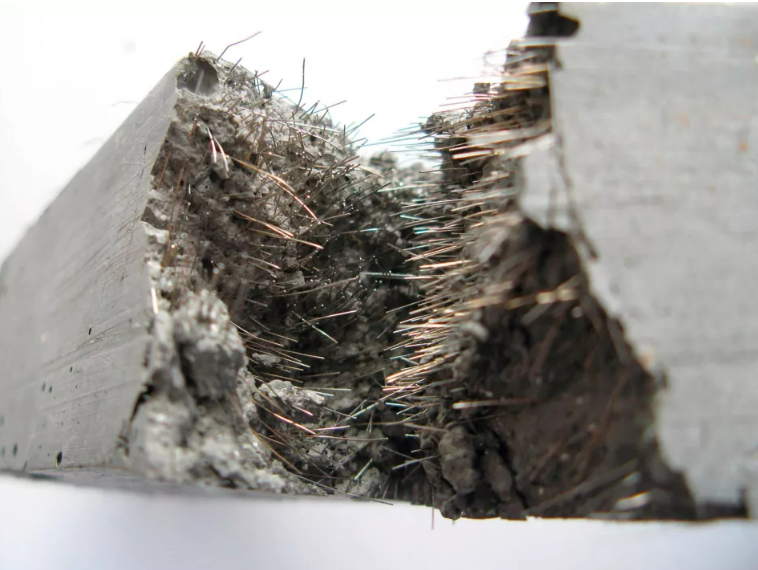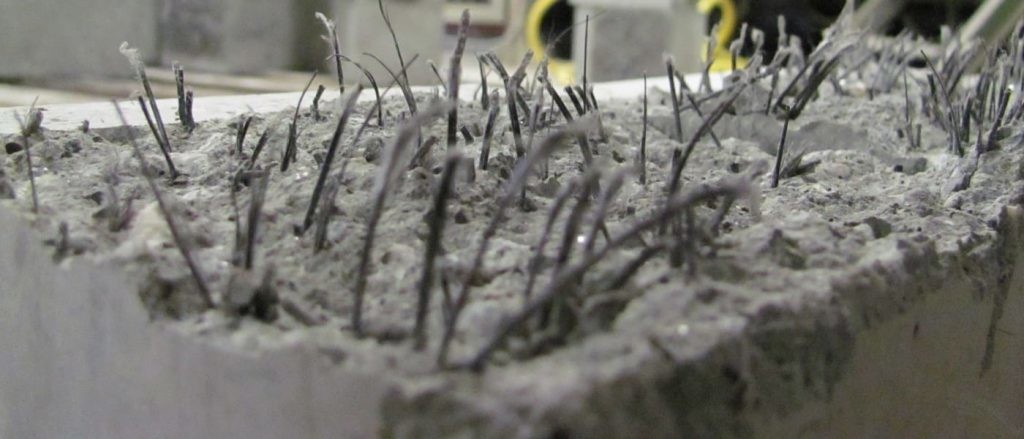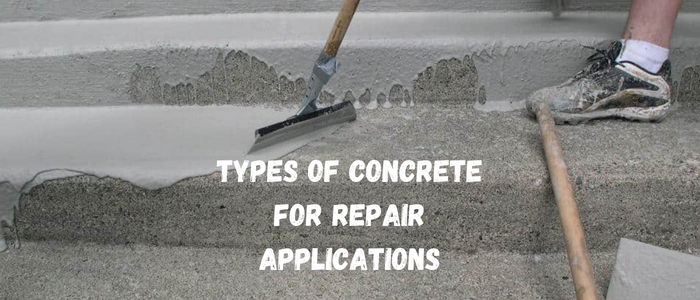Types of Concrete for Repair Applications
In this post, three of the modern concrete types that are used for repair applications in-situ are mentioned.
1- Fiber Reinforced Concrete
Fiber-reinforced concrete is concrete made primarily using the same materials as conventional concrete, but with the addition of fiber to the matrix. Thus, Fiber-reinforced concrete is made of hydraulic cements, aggregates, and discontinuous and discrete reinforcing fibers.
Fibers that are added to concrete mix are produced from steel, glass, and organic polymers (synthetic fibers).

The benefits of the addition of fibers into concrete are:
- Higher resistance to plastic and drying shrinkage
- Higher resistance to cracking
- Higher flexural and fatigue strength
- Higher shear capacity of beams
- Improved long term serviceability
Fiber-reinforced concrete can be used as a repair material for existing concrete.
Fibers alone are not used as the main source of reinforcement in fiber-reinforced concrete. Usually, fiber-reinforced concrete will contain the fiber and steel bars similar to that in normal reinforced concrete but will less amounts since the fibers cause this reduction.
However, in thin overlays that are used for repair applications, fiber-reinforced concrete can be used with additional reinforcement since the thickness of thin overlays is not sufficient for additional steel bars. Also, the developed stresses in the overlays are not high to need additional reinforcement bars.
In this case, the role of the fiber-reinforced concrete is not the resistance of service loads. The purpose of the fibers is:
- Improving the durability
- Reduction of plastic shrinkage
- Higher shock resistance
- Higher vibration resistance
Addition of fibers has a negative effect on the workability of concrete. Fibers, as you may imagine, reduce the slump of concrete, and make the process of casting harder.
Care should be taken when dealing with steel fiber-reinforced concrete since steel fibers may rust if the surrounding environment assist with the corrosion.

Low-Slump Dense Concrete
This type of concrete is a special type of concrete obtained by altering the composition of normal concrete.
The parameters of concrete mix design are:
- Moderate-to-high cement factor
- Water to cement ratio of less than 0.4
- Slump < 50 mm
- High density
These parameters cause quick strength gain and reduction in concrete permeability.
Low-slump dense concrete is highly resistant to chloride-ion diffusion. In addition, this concrete has a high resistance to abrasion; thus, it can be used as an overlay or protective surface layer for concrete.
Note: Low-slump dense concrete usually needs the addition of high-range water-reducing admixture or superplasticisers to allow easier workability. Also, seven days of curing are required for sufficient hydration.
Silica Fume Concrete
Silica-fume concrete is the same as conventional Portland cement concrete but with the addition of silica fume as a partial replacement for cement.
Silica fume concrete = cement + silica fume + water + fine aggregate + coarse aggregate
Silica fume is a by-product from the production of silicon and ferrosilicon alloys.
Silica fume is an efficient pozzolanic material which reacts with calcium hydroxide resulting from the hydration of cement and gives calcium silicate hydrate which is the source of strength in concrete.
Silica fume is added to concrete with a percentage between 5% to 10% and can provide concretes with compressive strength that reaches values up to 100 MPa
Adding silica fume to a concrete mixture can give the following advantages:
- Higher compressive strength
- Higher flexural strength
- Higher density of concrete
- Decreased penetrability of concrete
- Higher resistance to chemical attack
- Higher resistance to chloride attack
- Higher resistance to abrasion and erosion
The high strength of silica-fume concrete and the associated resistance to abrasion and erosion offer an affordable solution to abrasion and erosion issues in the repair of hydraulic structures, especially where the availability of aggregate may produce concrete that is inadequate in this regard.
To lessen the penetration of chloride ions into the concrete, silica-fume concrete is also usually employed as overlays on parking buildings and bridge decks.
Silica fume concrete has low bleed water and requires the curing for 7 days starting early to avoid the formation of shrinkage cracks.
Read Also:
